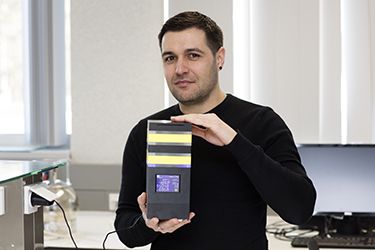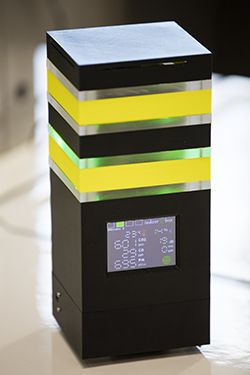Air quality meters for houses have been on the market for some time. But many devices are unreliable or offer limited possibilities. At the request of the Environment Department, VITO is developing a Sensorbox that collects and processes large amounts of data. The results are reliable and show the influence of residents’ behaviour on air quality.
Air quality in homes is just as important as the quality of our outdoor air; in fact, the ‘indoor air’ is even more susceptible to contamination. Harmful substances can accumulate between our walls. Because we spend on average ninety percent of our time indoors, attention to indoor air quality is a must. “In homes with little ventilation, the behaviour of residents plays a greater role,” says Borislav Lazarov, researcher at VITO. “Drying clothes in the living room increases the humidity. Builders sometimes insulate inner walls with materials that are actually intended for insulation of outside walls. If these contain flame retardants, harmful fumes are released. In new homes we sometimes see residents turning off the automatic ventilation system because they find it too noisy. With our new Sensorbox we want to examine how the behaviour of residents influences air quality.”
Combining data
A Sensorbox contains various sensors to measure substances in the indoor air. The data are transmitted to a central server at VITO. There they are supplemented with characteristics that the residents provide concerning their home and activities. The unique aspect about this project is the in-depth data processing that VITO carries out. Borislav Lazarov: “In the analysis, we take into accountthe influence that different parameters exert on each other. Sensors for gaseous substances can incorrectly indicate a change in a concentration when the humidity rises. Thanks to our expertise, we are able to deal with all these influences.” The data processing always remains within the limits of the GDPR privacy legislation. A limited selection of data is immediately visible on the Sensorbox screen. A blue, green, orange or red lamp on the Sensorbox clearly indicates the air quality. The system also contains an alarm for carbon monoxide.
Network of sensors
In the longer term, the wide-ranging data processing is particularly important. If a Sensorbox is placed in hundreds of homes, patterns can become clear. “This can provide interesting information for policymakers,” says Borislav Lazarov. “How much ventilation does a house need? And does it have to work automatically? Which behaviour can lead to moisture problems? A Sensorbox identifies the behaviour of residents and can give tips for proper ventilation.” The current boxes are owned by the Environment Department, which is financing the research. After the study, it will be decided whether the project will be followed up. “The three demo boxes must show that the concept works,” concludes Lazarov. “The ultimate goal is to develop an extensive Belgian sensor network.”



